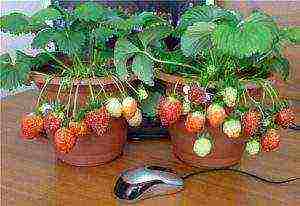Content
Part 1 Preparing Petri dishes
-
 Prepare agar culture medium.
Prepare agar culture medium.
Agar is a jelly-like substance used to grow cultures of bacteria. Agar is made from red and brown algae, it is an ideal environment for many different types of microorganisms. Sometimes other substances are added to the agar, such as sheep's blood, if the goal is to achieve a more rapid growth of microorganisms.
- The easiest way is to use powder agar. You will need 1.2 grams (½ teaspoon) for each 10 cm petri dish.
- In a heat-resistant container, dilute the agar powder with 60 ml (¼ cup) hot water. You understand that 60 ml is for one Petri dish. Calculate the proportion you need yourself.
- Place the container of water and powder in the microwave and, bringing the water to a boil, boil it for a minute. The main thing is that the agar solution does not "run away".
- The nutrient medium is considered ready when the powder is completely dissolved, and the liquid itself is transparent.
- Let the culture medium cool, then proceed to the next steps.
-
 Prepare Petri dishes.
Prepare Petri dishes.
You've seen them - small flat cups made of glass or transparent plastic. Petri dishes have two parts, an upper and a lower one, they are inserted into each other, which serves to protect the culture of microorganisms from air and other potential sources of contamination, as well as to contain gases released by microorganisms during the growth phase.
- Petri dishes must be sterile. Sterile! Otherwise, the results of a bacteria cultivation experiment will go down the drain. If you buy Petri dishes, they must be sold in a hermetically sealed package (such dishes are pre-sterilized by the cold method).
- Remove the cups from the packaging and separate the halves. Very carefully, pour the culture medium into the bottom half of the cup with a thin layer just covering the bottom.
- Close the petri dish quickly to keep airborne bacteria out of the agar. Let the Petri dishes stand quietly for 30-120 minutes until the culture medium cools down and hardens (the prepared culture medium will resemble jelly).
-
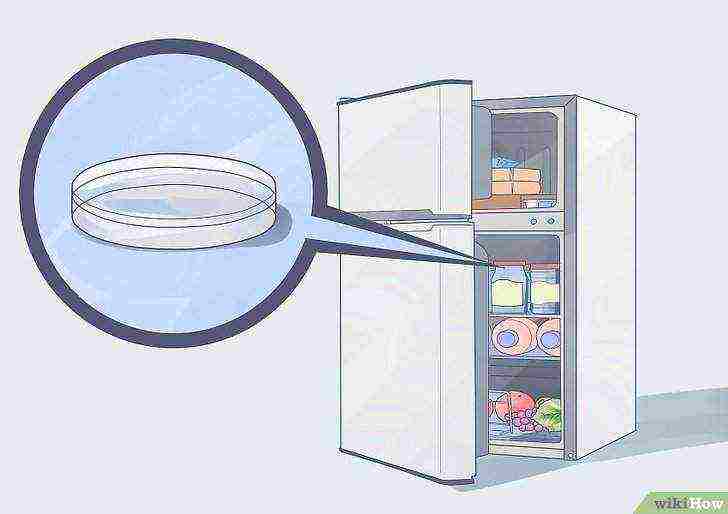 Refrigerate petri dishes.
Refrigerate petri dishes.
If you do not plan to immediately colonize the bacteria in their new home, then the Petri dishes should be placed in the refrigerator until their time comes.
- Storing Petri dishes in the refrigerator is a guarantee that the water will not evaporate (and bacteria love water very much). In addition, the culture medium in the cold will become even slightly harder, and this will prevent you from accidentally tearing it during the inoculation of bacteria.
- Store Petri dishes in the refrigerator upside down. So condensation will not accumulate on the lid, which will then drip back and spoil the nutrient medium.
- Petri dishes with nutrient medium can be kept in the refrigerator for a couple of months. When it's their turn, remove the cups from the refrigerator and let them come to room temperature.
Part 2 Growing bacteria
-
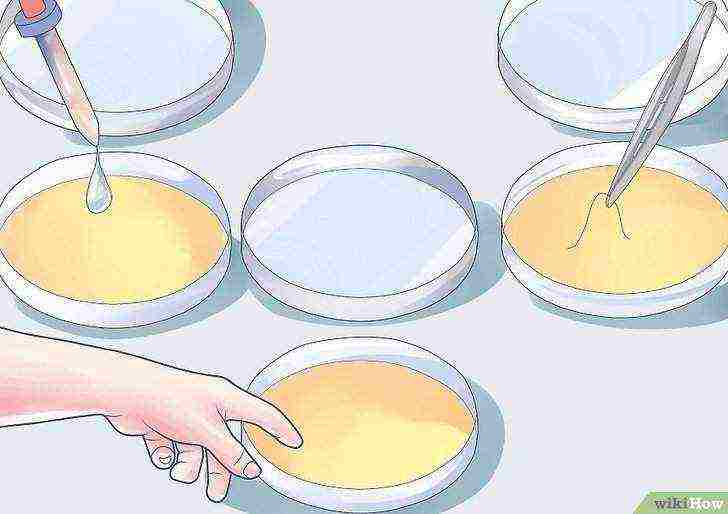 Add the bacteria culture to a Petri dish.
Add the bacteria culture to a Petri dish.
Agar is solid, Petri dish is at room temperature - everything is ready to continue the experiment! What's next according to the plan? That's right, replanting a culture of bacteria in a nutrient medium! And here there are two methods - either direct contact or sampling.
- Direct contact: in this case bacteria get onto the agar through ... yes, through direct contact with it.One of the most common methods of replanting in this way is simply to lightly touch the surface of the culture medium with your finger (it does not matter before or after washing your hands). Alternatively, you can touch with your fingernail or even an old coin. You can simply place a hair on the nutrient medium or drop a drop of milk there. In general, use your imagination!
- Sampling: This method allows you to collect microorganism samples from any surface and transfer them to the culture medium. All you need are cotton swabs. Just slide the stick where you want to take a sample of microflora (even from the mouth, even from the keyboard), then slide the same end of the stick along the surface of the culture medium (do not tear it). In a couple of days, you will see interesting and terrible results of your experiment!
- Alternatively, microorganisms from different sources can be added to the Petri dish - for this you just need to divide the dish into quarters.
-
 Close, sign and seal the Petri dishes.
Close, sign and seal the Petri dishes.
After placing the bacteria on the culture medium, you need to close the cup with a lid and seal it with some kind of scotch tape.
- Be sure to sign what and where it grows from in each particular cup, otherwise you will not remember later. You can write with a marker.
- As an added precaution, you can store each cup in a separate zip bag. This will serve as an additional layer of protection for growing bacteria. If the bag is transparent, it will not prevent you from looking at the results.
-
 Place petri dishes in a warm and dark place.
Place petri dishes in a warm and dark place.
Let's say for a few days so that bacteria can grow quietly. And do not forget that you must store Petri dishes upside down now, so that random drops of condensate falling from the lid do not spoil the beauty of the microorganism colony.
- The optimum temperature at this stage is somewhere between 20-37 Celsius. However, if it is necessary for the microorganisms to grow more slowly, then they can always be rearranged to a cooler place.
- Allow bacteria to grow for at least 4-6 days. During this time, the culture will develop quite well. The characteristic smell coming from the Petri dishes will notify you that growth has begun.
-
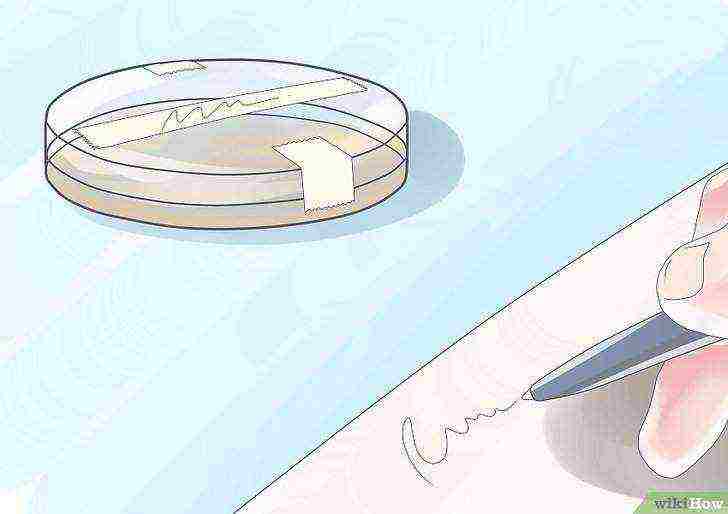 Record your results.
Record your results.
After a few days, you will notice that in each Petri dish something of its own is thickly heading - bacteria, mold, fungi, etc.
- Write down your observations for each cup, draw conclusions about where the most bacteria were.
- What's in your mouth? And on the doorknob? And on the keyboard? Oh, the results will amaze you ...
- Using a special marker, you can track the growth rate of bacteria by drawing the contours of the culture on the bottom of the Petri dish every day. In a few days, the bottom will look like a cut from a tree - everything is in circles!
-
 Check the effectiveness of antibacterial agents.
Check the effectiveness of antibacterial agents.
It will be interesting to see what happens if you add something antibacterial to the culture of bacteria (soap, for example). How effective will it be?
- Place a drop of something antibacterial in the center with a cotton swab, then continue the experiment as usual.
- The bacteria in the dish will grow, forming a ring around the spot where the antibacterial agent was applied. There will be no bacteria, this is the so-called. "dead zone".
- The effectiveness of antibacterial agents can be compared by evaluating the width of the dead zone in different Petri dishes. The principle is simple: the wider the zone, the more effective the substance.
Part 3 Safe Disposal of Microorganisms
-
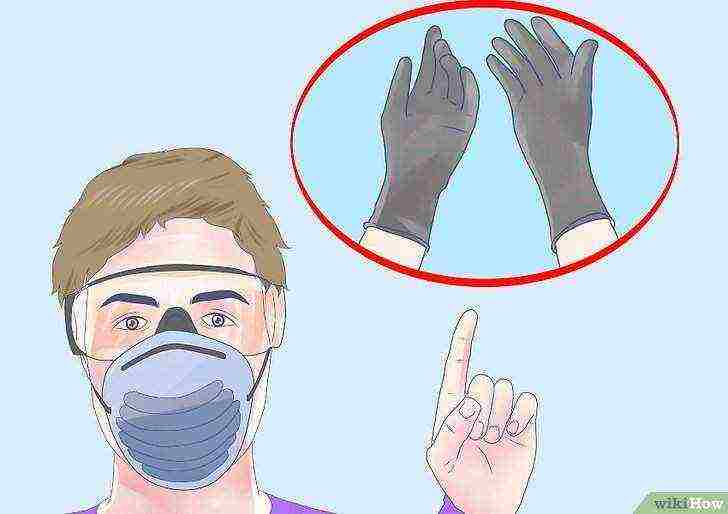 Observe all precautions.
Observe all precautions.
Before disposal, you need to take care of safety.
- Yes, most of your bacteria will not pose a threat. However, large colonies of bacteria can pose a certain threat, so first kill them with chlorine.
- When working with bleach, protect your hands with rubber gloves, your eyes with glasses, and your clothes with an apron.
-
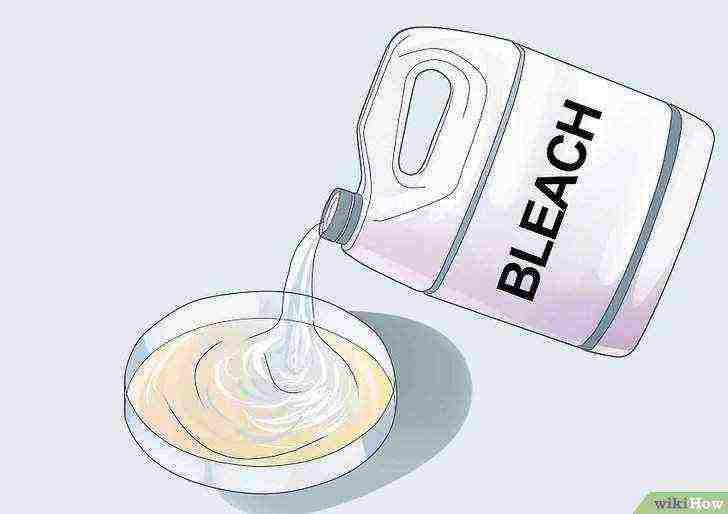 Pour the bleach into the petri dishes.
Pour the bleach into the petri dishes.
With the cup open, gently pour in a small amount of bleach. Hold the bowl at this moment over the sink. Contact with bleach will kill bacteria.
- Do not spill bleach on your skin, it stings.
- Put the disinfected Petri dishes in zip bags and throw them all into the trash.
Tips
- Potato agar can also be used: this requires 20 grams of potatoes, 4 grams of agar, and 2 grams of dextrose (glucose). Boil it all in a measuring cup. Then pour the liquid into a Petri dish and let it dry. Then take sterile cotton swabs and rub them where there are bacteria, then place the bacteria in the culture medium and cover the Petri dish. Put it in a warm place for the day. The next day, you should already see a colony of microorganisms.
Warnings
- Never grow dangerous microorganisms. Physiological fluids it is forbidden place on a Petri dish. If these cups are opened, it can lead to serious illness.
Article Information
This page has been viewed 72,867 times.
Was this helpful?
The process of growing cell cultures such as bacteria places special demands on the nutrient medium. There are no particular difficulties in growing bacteria, this event is quite easy to carry out at home with the appropriate knowledge from the field of microbiology and a set of tools (the main inventory used in the laboratory is a Petri dish).
The medium is a specially formulated solution. This is a set of components that provide favorable conditions for the cultivation of microorganisms or the gradual accumulation of their waste products, which will then be used for specific purposes. They are widely used in the food and household industries. For each type of crop, the environment must be different. So, the process of growing lactic acid sticks or bacteria for a septic tank is significantly different.
Features of the solution
Nutrient media are classified according to composition, purpose, consistency. There are two main groups: production and diagnostic.
- Production environments are the basis for the manufacture of medicines, bacteria for septic tanks. Solutions allow for quality control of biological substances. In such nutrient media for growing cultures of bacteria, there should be no harmful toxic impurities that can harm humans or affect the vital processes of the colonies.
- In diagnostic nutrient media, the following target subgroups are distinguished:
- for the isolation of certain types of bacteria cultures (differential);
- for growing a wide range of colonies of microorganisms;
- to isolate a specific type of pathogen; storage media (enrichment of bacteria with their waste products).
The consistency is distinguished:
- dense,
- liquid,
- semi-liquid.
In solid and semi-liquid nutrient media, the main component is a liquid base, to which agar is added. It is a polysaccharide that is isolated in the laboratory from some species of seaweed.
Cultivation of culture colonies in a medium with the addition of agar can be done at home or in the laboratory, be sure to adhere to room temperature. This is due to the fact that gelatinous media melt already at a temperature of + 25-30 ° C. In a semi-liquid form, they are placed on the surface of a Petri dish until completely solidified.
The most common solid media: coagulated blood serum, eggs, colonies can also be grown on potatoes.
Popular and affordable inventory
Cultivation of microorganisms in a petri dish is one of the most common methods of obtaining the necessary bacteria, and it is easy to use. It is suitable for lactic acid cultures as well.
A Petri dish is a container for the laboratory and at home, which is two flat dishes with vertical low edges. The larger dish serves as a lid.
In order to grow colonies in a nutrient medium, Petri must be prepared accordingly.For sterilization, dry heat is applied to a glass vessel using an oven. Then the medium cooled to 55 ° C (melted) is carefully poured onto its surface, keeping the dishes horizontally. You can use any brush strokes - from crevices in the floor or baseboards, from the table in the kitchen, even from your own skin. Gently shake the cotton swab from the invisible test subjects onto the cup and close the lid. Put the cup down and watch the changes daily.
It is important to know that solid nutrient media can be used in a Petri dish. This allows, in addition to cultivation, to perform sieving, isolation of isolated colonies, to assess the sensitivity of bacteria to drugs of the antibacterial spectrum.
To count the number of culture colonies at home or in the laboratory, it is enough to bring the Petri dish to a bright light source. The availability and ease of use of this inventory greatly simplifies the process of growing bacterial colonies.
Strains for the food industry
In order for the production of milk-based food products to be at a high level, providing consumers with the necessary volumes of yoghurts, kefir and other lactic acid products, technologists isolate bacteria, select them and make starter cultures.
Lactic acid culture strains are obtained in the laboratory from milk whey with the addition of:
- corn extract,
- growth stimulants,
- buffer salts.
Growing lactic acid microorganisms, subdivided into two groups - sticks and streptococci - requires exposure to time and temperature limits.
Cultivation of microorganisms for wastewater treatment
To achieve maximum efficiency in wastewater filtration, certain types of bacteria cultures are used. For septic tank owners, this is an indispensable substance that prevents the spread of an unpleasant odor, activates the mechanism for processing organic deposits at the bottom.
Septic tank strains are a mixture of enzymes, live cultures, amino acids. The medium used is a special mineral carrier. This type of bacteria for a summer cottage septic tank is prone to anabiosis, that is, until it hits the bottom of the pit, microorganisms are in a "dormant" state and are activated only by direct contact with water or organic matter. If there is not enough liquid within the septic tank or low temperatures constantly prevail, regardless of the growing method, the bacteria will "work" more slowly.
The cultivation of various types of bacteria (lactic acid, for medicines, for a septic tank) is carried out by specialists. The drugs are delivered to the consumer ready-made. However, knowing the rules for growing strains, a nutrient medium necessary for each class of cultures and having a Petri dish at hand (for lactic acid bacteria as well), you can try to do this at home. The chances of getting a good result are high, the main thing is to properly sterilize the dishes, as well as to exclude the ingress of foreign substances that can affect the purity of the experiment. Growing bacteria for a septic tank is more difficult than getting a lactic acid culture starter.
The only thing that you can definitely grow at home is mold. Yes, yes, these are small mushrooms that belong to microorganisms.
How to grow species? You need an autoclave to sterilize, nutrient media for growth, a thermostat to maintain a constant temperature of 37 degrees, a lot of cleaning, bleach and UV lamps.
Suppose we have it all. We take a Petri dish and, say, a selective medium - yolk-salt agar, only Staphylococcus aureus grows on it (everything is sterile). Next, you need to add microorganisms to the cup. Staphylococcus aureus loves to live on the skin, and that's okay, so touch the medium lightly without damaging it. Then we put the thermostat for a day.
So, we have grown staphylococcus colonies. But staphylococci are just a genus. More often, several species grow on the cup. We will define them. First, note the presence of lecithinase on the plate.
These "clouds" around the colonies are called lecithinase.
Here are the colonies without lecithinase:
Next, you need test tubes with mannitol, rabbit plasma and urease. Everything is sterile. We bring the colonies into these tubes and put them in a thermostat. With a positive reaction, the state of the substance in the test tubes changes. Mannitol changes color (don't ask from which to which - it varies depending on the manufacturer), liquid plasma becomes solid, uerase is usually used on paper disks.
Oh yes, you still need to know at least approximately the inoculation technique, have a laboratory tablet, a burner, 95% alcohol for it, a bacteriological loop. And the ability to work in aseptic conditions!
This is a rough guide. And in this way you will only determine the SPECIES, but not the strain. It makes no sense to store all the time on the same medium, because the bacteria are hungry too and will need to be subcultured onto new agar. And kept in a thermostat, of course.
 GREATED BACTERIA from RACCOON'S PAWS, IN A PETRI CUP
GREATED BACTERIA from RACCOON'S PAWS, IN A PETRI CUP
1 month back
Have you ever wondered how many bacteria live on things familiar to us in our apartment, with which we every day ...
 Dilution of bacteria from dirty water (Ozonation)
Dilution of bacteria from dirty water (Ozonation)
4 months back
The first experience of diluting bacteria in agar from dirty water. Bacteria from ozonized water and aerated ...
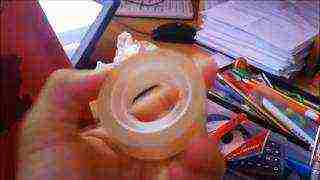 Planting super bacteria in a petri dish.
Planting super bacteria in a petri dish.
2 years ago
adding to the first video on my channel.
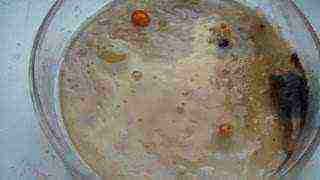 EXPERIMENTS Part 1.5 Bacteria Attack or EVERYTHING JUST BEGINS!
EXPERIMENTS Part 1.5 Bacteria Attack or EVERYTHING JUST BEGINS!
2 years ago
We grew bacteria in petri dishes on vegetable agar (porridge broth was mixed with agar and starch)….
 Evolution of bacteria in a huge petri dish
Evolution of bacteria in a huge petri dish
1 year ago
VK Group: Original: Visually about how the mechanisms of evolution ...
 Biology as art: BSU microbiologists paint pictures from bacteria!
Biology as art: BSU microbiologists paint pictures from bacteria!
1 year ago
What do you think, with the help of which these pictures are drawn? Find it difficult to answer? We will tell you with the help of bacteri ...
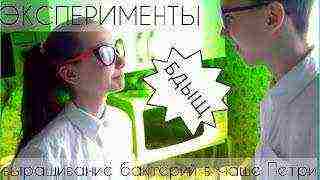 EXPERIMENTS Growing bacteria.
EXPERIMENTS Growing bacteria.
2 years ago
Guys, we're not biologists. heh) We're just learning and fooling around. But if we succeed, I will definitely ...
 Grew up a cave in a HYIPE RACCOON BOX !!! GROWING DIFFERENT COLORED CRYSTALS FROM CHINA!
Grew up a cave in a HYIPE RACCOON BOX !!! GROWING DIFFERENT COLORED CRYSTALS FROM CHINA!
4 months back
Develop memory, attention and thinking with the help of online trainers: Today we will grow a real ...
 Synergetics. Belousov-Zhabotinsky reaction in a Petri dish
Synergetics. Belousov-Zhabotinsky reaction in a Petri dish
2 years ago
For direct demonstration of the experiment in a Petri dish, a thin layer prepared in the previous ...
 Evolution of bacteria in real time
Evolution of bacteria in real time
1 month back
Helping the project: Inspired by the magic of Hollywood masters, scientists from the Kishony laboratory ...
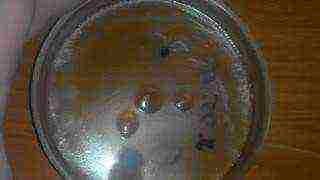 Peter's Cup after settling took 9 days
Peter's Cup after settling took 9 days
2 years ago
An experiment of how I can virostity in the bowl of Peter I like culture. An experiment in the distance, well, it has grown, to help ...
 Petri dish: What are peptides and how to strengthen the immune system
Petri dish: What are peptides and how to strengthen the immune system
2 years ago
Details and audio podcast here: In a joint project with the Petri Dish supergroup ...
 Hay stick (Bacillus subtilis)
Hay stick (Bacillus subtilis)
2 years ago
How to grow a hay bacillus? What does hay stick eat? ...
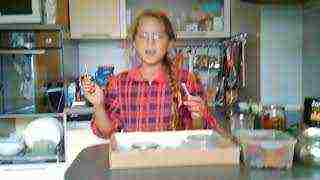 Growing bacteria at home
Growing bacteria at home
8 months back
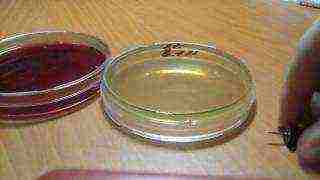 Microbes and colonies
Microbes and colonies
1 year ago
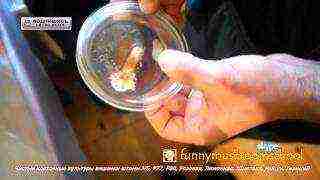 Mushroom mycelium - ATTENTION !!! manufacturing errors, Petri dishes
Mushroom mycelium - ATTENTION !!! manufacturing errors, Petri dishes
3 years ago
Most often, videos of an advertising nature are published. Rarely does anyone voice exactly the mistakes of any process….
50 LYAPOV from SCHOOL TEXTBOOKS 2h
7 days back
The theme of school obstinacy continues. Today, as I promised, the second part of 50 blunders in school textbooks ...
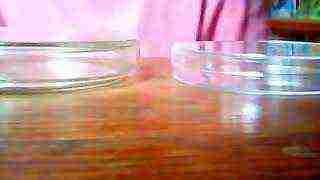 How to grow mold and bacteria
How to grow mold and bacteria
7 months back
Sorry for the poor quality and fingers in the screen.
 Dangerous bacteria in our apartments, where to look for them and how to neutralize them?
Dangerous bacteria in our apartments, where to look for them and how to neutralize them?
2 years ago
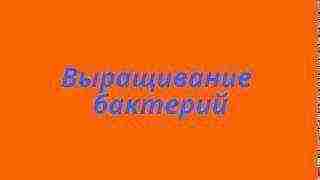 How to grow bacteria cultures in a petri dish
How to grow bacteria cultures in a petri dish
11 months back
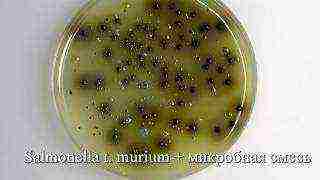 Bismuth sulfite GRM agar
Bismuth sulfite GRM agar
1 year ago

